All night shopping. Tick. UNESCO historical sites. Tick. Ancient fortresses. Tick. Museums. Tick. You’ve done them all. If you’re wondering what to do in South Korea next, how about some ‘real me time’ to find your inner balance away from the madding crowd? A South Korea temple stay is a zen retreat worth trying.
If you ever wondered what’s behind monastery walls and you have tried to imagine what it would be like to experience the quiet life of a Buddhist nun or monk, now you can: South Korea has a program that lets the visitor experience from a day visit to a short stay inside a Buddhist temple.
Contents
Temple Stay In Korea
“Templestay” has become so popular with foreign visitors to Korea, there are 16 temples open to visitors who wish to immerse themselves in Korean Buddhist culture, meditate side by side with the temple monks and nuns, listen to dharma talks, taste temple food, try their hand at calligraphy or simply pick up a rake and help in the garden.
Finding delight in a fresh blade of grass, in a soothing cup of tea or in the fresh mountain air are some of the ways to recover your inner balance.
A recent visitor to a temple recalls mistaking the Abbot for a gardener as he stopped his raking of leaves near the reception to offer help with the visitor’s suitcase. His grey T-shirt, roomy grey pants gathered at the ankles and huge straw hat concealed a formidable meditation master and an expert at the Dado (Korean tea ceremony).
Also read:
- 20 Famous Landmarks in South Korea
- 20 Things To Do In South Korea
- 20 Best Beaches In South Korea
- 35 Things To Do in Seoul
- 20 Seoul Day Trips
- 20 Things To Do In Jeju Island
- 10 Things To Do In Gyeongju
- Andong Mask Dance Festival
- Jirisan National Park
- Korean Temple Stay Experience
- Seoul At Night
- 20 South Korean Cities
- Winter In Korea – 20 Things To Do
- 20 Things To Do In Busan
Korea Temple Stay Experiences
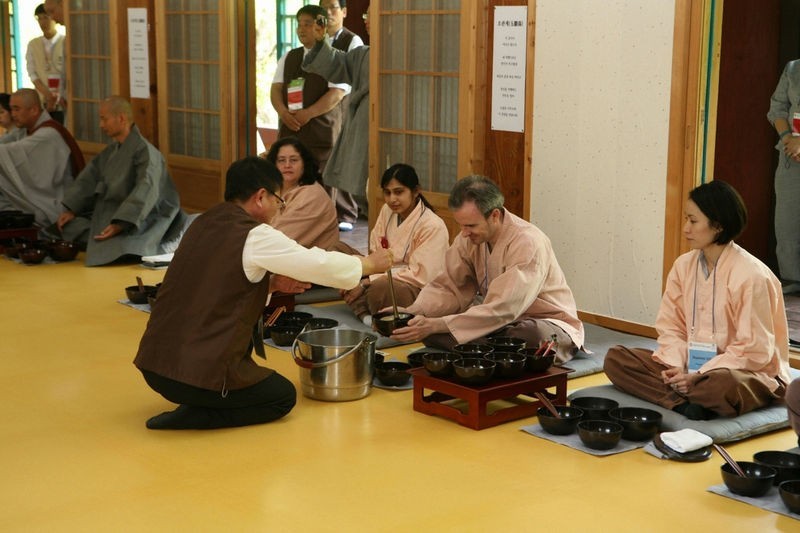
Life is orderly and peaceful inside the temples.
Days begin before dawn with a drum breaking the stillness of the night and guiding participants to the candlelit chapel where chanting is followed by an energetic sequence of 108 prostrations – which are a real work out.
Meditation takes several forms and it does not just simply mean sitting in silence.
Keeping still during sitting meditation can be a trial in itself as the mind revs up in a continuous internal dialogue making it hard to concentrate.
Newcomers twitch, change positions, cross and uncross cramping legs.
A typical temple schedule would include sitting meditation followed by an interview with the teacher, followed by walking meditation followed by some interesting activity such as tea ceremonies, lantern making or calligraphy, till the evening talk.
Temple Meals
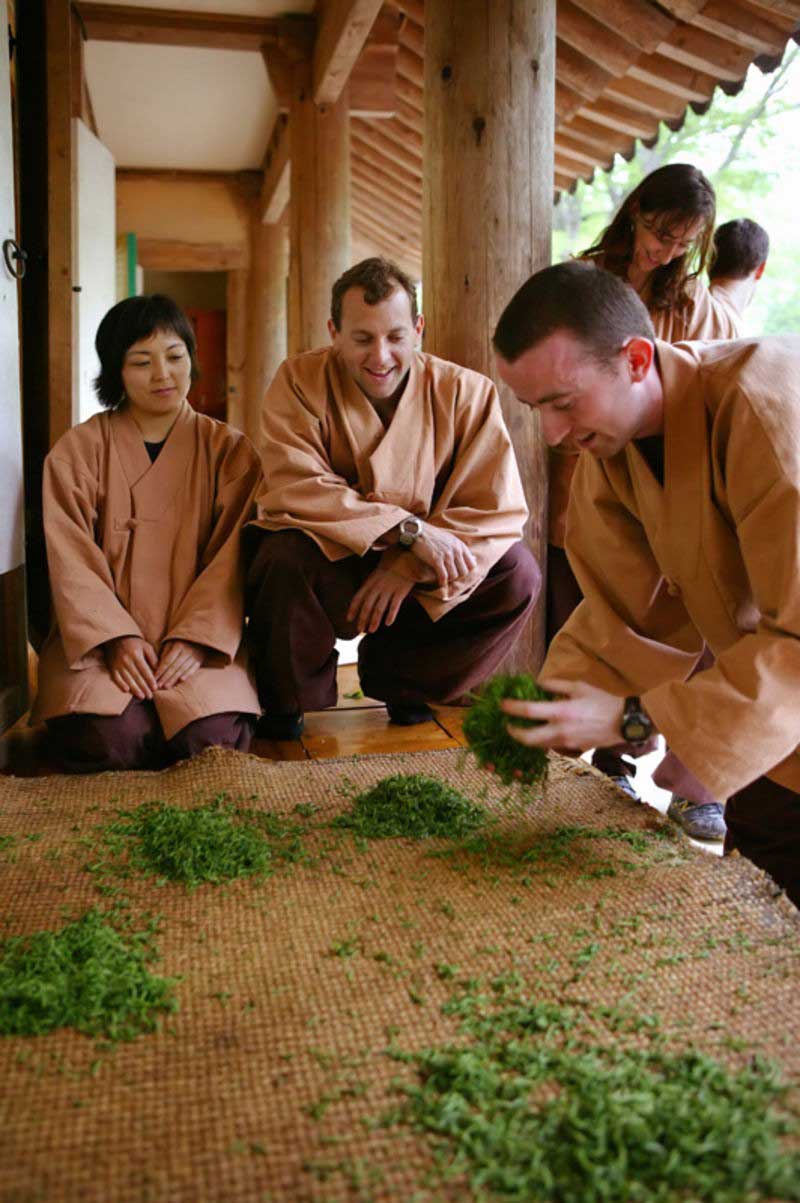
The major meal of the day is taken before noon (an ancient monastic rule) in silence, for the better appreciation of what is consumed.
Meals are vegetarian and delicious prepared with care and love.
Various kinds of tofu are steamed, fried or fermented; vegetables are fresh and abundant, punctuated by the ever-present sourness of kimchi and reinforced by the crunchiness of black rice.
Two meals a day is a monastic rule instituted after the original peripatetic, mendicant followers of Lord Buddha adopted more settled ways congregating under the one roof, in what today we call a monastery. The idea behind it is that less physical work requires less food intake.
Meditation
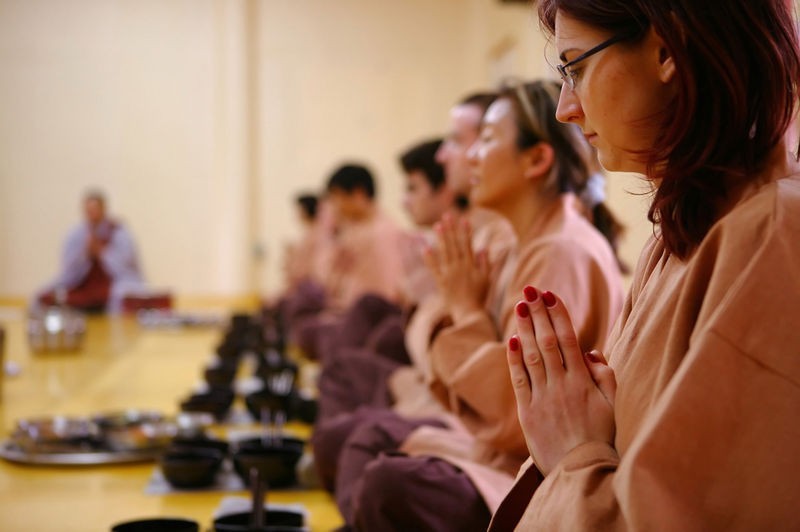
The main purpose of meditation is to still the mind.
The teachers say ‘the true appearance of the world cannot be seen through the delusions and dreams that clutter the mind. When these dreams and illusions come to a stop, the true face of the world can be seen for the first time. Nothing can be reflected in water that is agitated.’
In a traditional Zen monastery a slouching position or falling asleep while meditating attract a firm tap on the shoulder from the master who wields a bamboo rod split in two and tied back together with twine.
The errant meditator at that point would turn his head to receive another whack on the other shoulder.
The split bamboo rod delivers an impressive clapping sound with very little impact and does the trick of bringing the mind back from wandering.
Bonginsa, on the other hand, offers Vipassana meditation and does not use this method.
Seon Buddhism (known as Zen in the west) is the form of Buddhism practised in Korea and Japan and belongs to the Mahayana school (Tibet, China and Mongolia also fall in the Mahayana division but without the Zen influence).
Why Choose A Temple Stay?
After a temple stay, you might find rejoining the world of consumerism a bit of a shock.
But slowly the benefits become obvious: participants report a feeling of calm and improved concentration and become intensely aware of all the good things life has to offer.
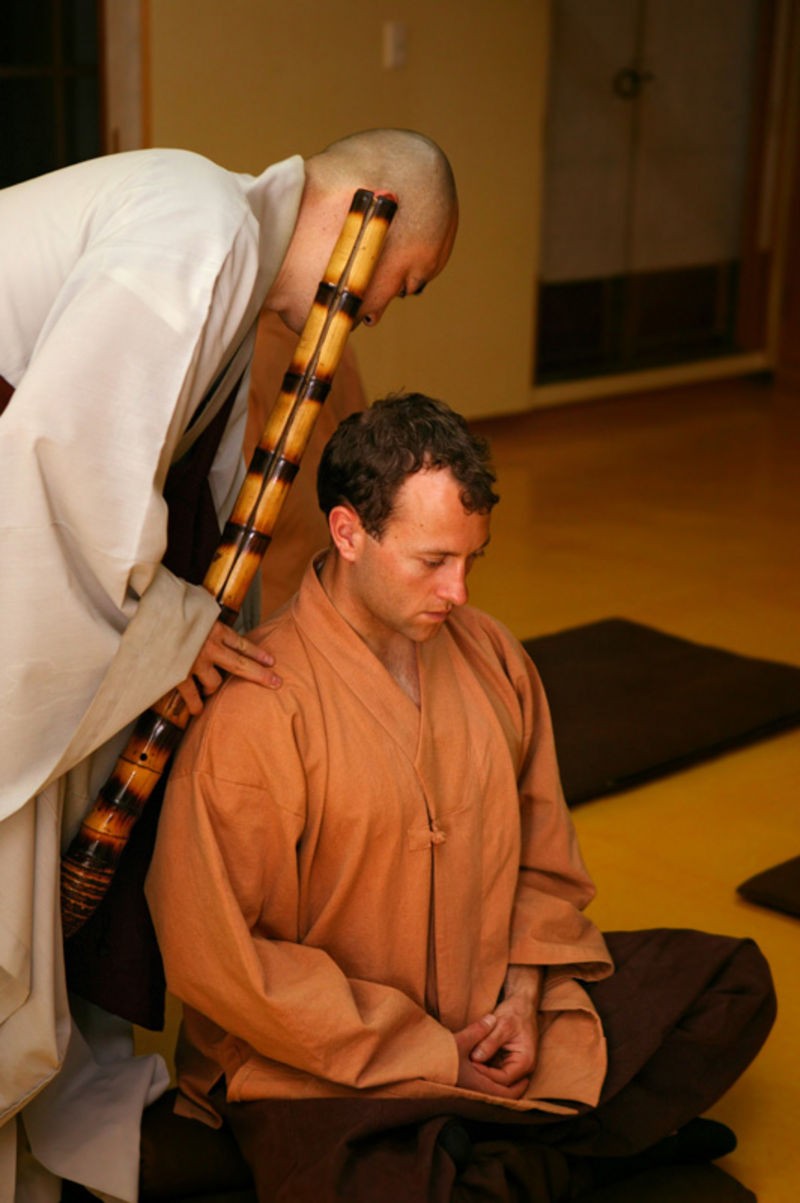
Whether you’re interested in getting a feeling for what Templestay is all about, want to get a little taste before you actually sign up, or are just trying to figure out which temple would be best for you, go to.
Korean Temple Stays
Bulguksa Temple Stay
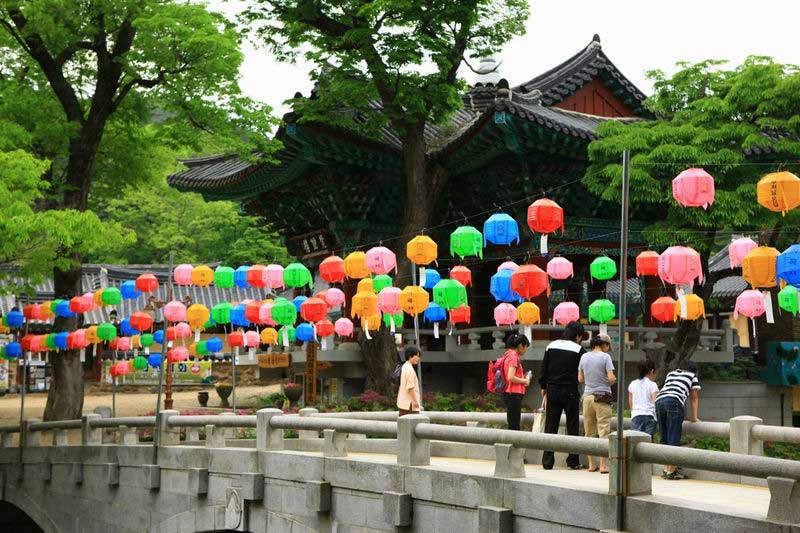
Bulguksa, the largest and perhaps most beautiful of Korea’s temples is located in the ancient Shilla capital of Gyeongju and is a participant in the program.
It also happens to be a UNESCO World Heritage site.
Gyeongju is a wonderful area to visit for a few days with several World Heritage wonders nearby including the must-see Seokguram Buddha in the mountains and the ancient Shilla burial mounds and museum.
Golgulsa Temple Stay
If you are interested in martial arts then Golgulsa Temple may appeal with its sunmudo, which literally means the ‘way of doing meditative martial arts’ which traces its origins back over a thousand years.
Golgulsa Temple is built into a massive rock area in the mountains nearby Gyeongju and incorporates intense physical training leading to increased awareness.
There are also Buddhist temples offering the program in the suburbs of Seoul, such as Bonginsa about a 90-minute drive from the capital.
Bonginsa Temple Stay
There is something different at Bonginsa, which might appeal to those familiar with Vipassana meditation.
The nun in charge of meditation is Jin Kyeong Sunim (sunim means monk/nun).
She spent 10 years in Burma learning the Vipassana meditation method, jumping across Buddhist schools from the Mahayana to the Theravada traditions to acquire a few extra tools.
The Theravada tradition – which is the more ancient form – is practised in Southeast Asia.
Jin Kyeong Sunim is keen to expand her horizons and pick different ideas from different disciplines.
Catholic nuns have stayed here for meditation retreats and left enchanted with the experience.
They poignantly pointed out they would love to offer the Buddhist nuns a stay at their convent but that – unfortunately – is not allowed by their rules.
Bonginsa is also unusual in the accommodation offered: private cells for each participant -about 4 x 2 metres in size with private bathroom.
Temple Stay Tips
Prices range from 50,000 Korean won (less than $50) up to 100,000 Korean won (just under A$100).
Many temples also offer a ‘temple life’ program for day visits for around 20,000 Korean won (less than $20).
In Seoul, visit the Templestay Information Centre is across the street from the Jogyesa Temple.
This building houses the main Templestay offices, Information Centre, Education Centre, a traditional temple restaurant called “Balwoo Gongyang”, the Lotus Café and a Buddhist bookstore.
Plan Your Trip

Rent A Car – Find the best car rental rates at Discover Cars. They compare car hire companies to provide you with the best deal right now.

Find A Hotel – If you’re curious about this article and are looking for somewhere to stay, take a look at these amazing hotels.

